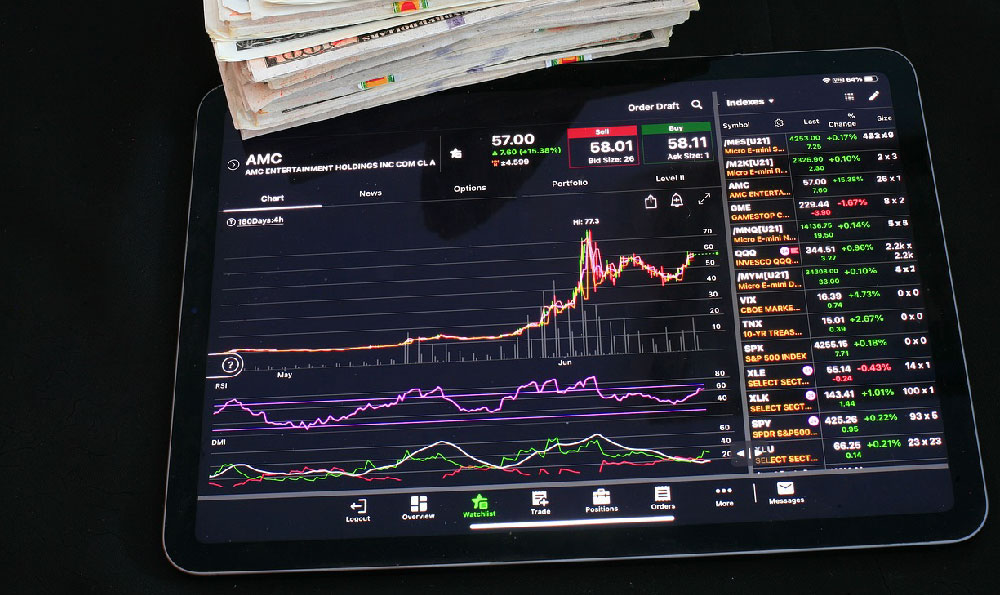Why Short BTC on Keepbit? Is No-Margin Trading Possible?
The allure of cryptocurrency trading, particularly Bitcoin (BTC), lies in its volatility. This inherent price fluctuation, while risky, also presents opportunities for savvy traders to profit from both upward and downward market movements. Keepbit, a platform gaining traction in the crypto derivatives space, offers traders the ability to "short" Bitcoin, essentially betting against its price. But why would one choose to short BTC, especially on Keepbit, and is "no-margin" trading a realistic possibility?
Understanding Shorting Bitcoin

Shorting Bitcoin involves borrowing BTC and immediately selling it on the market, anticipating a price decrease. The trader then buys back the same amount of BTC at a lower price and returns it to the lender, pocketing the difference as profit. The appeal is clear: you can profit even when the market is bearish. However, it's a high-risk strategy, as potential losses are theoretically unlimited since the price of BTC could rise indefinitely.
Why Short BTC on Keepbit?
Several factors might entice traders to short BTC on Keepbit:
- Market Sentiment: If a trader believes that Bitcoin is overvalued or faces significant headwinds (e.g., regulatory concerns, negative news events, technical analysis suggesting a downtrend), shorting becomes an attractive option. Keepbit, with its user interface and tools, might provide a convenient platform to act on this sentiment.
- Hedging: Traders holding long positions in other cryptocurrencies or even traditional assets might short Bitcoin to hedge against potential losses during a market downturn. A decline in BTC price often drags down the entire crypto market, making shorting BTC a viable hedging strategy.
- Speculation: Some traders engage in shorting purely for speculative purposes, aiming to capitalize on short-term price fluctuations. They might use technical indicators, charting patterns, or news events to predict potential dips in the BTC price.
- Leverage: Keepbit, like many crypto derivatives platforms, likely offers leveraged trading. Leverage allows traders to control a larger position with a smaller amount of capital, amplifying both potential profits and losses. While high leverage can be tempting, it significantly increases the risk of liquidation.
- Platform Features: Specific features offered by Keepbit, such as low trading fees, advanced order types, and a user-friendly interface, might make it a preferred platform for shorting BTC compared to competitors.
Is No-Margin Trading Possible? A Deep Dive
The concept of "no-margin" trading is intriguing but requires careful examination. In traditional margin trading, you borrow funds from a broker to increase your trading position. This requires you to deposit a certain amount of collateral, known as margin, to cover potential losses. If your position moves against you and your margin falls below a certain level, you may face a margin call, forcing you to deposit more funds or have your position liquidated.
Truly "no-margin" trading is practically impossible in the traditional sense when shorting an asset. Shorting inherently involves borrowing, and borrowing requires some form of collateral or guarantee to the lender. However, there might be nuanced interpretations:
- Low Margin Requirements: Keepbit might offer relatively low margin requirements compared to other platforms. This could give the impression of "no-margin" trading, although a small amount of capital would still be necessary.
- Funding Rate Arbitrage (Potential Complexity): In some cases, traders might attempt to arbitrage funding rates on different exchanges. If the funding rate for shorting BTC on Keepbit is significantly lower (or even positive) compared to other platforms, it could partially offset the margin requirements. However, this is a complex strategy requiring careful monitoring and execution.
- Promotional Offers: Keepbit could, as a promotional offer, waive margin requirements for a limited time or for specific users. This would be a temporary incentive rather than a permanent feature.
- Synthetic Assets and Derivatives (Advanced): More complex decentralized finance (DeFi) protocols might offer synthetic assets or derivatives that mimic the behavior of shorting BTC without explicitly requiring margin. These protocols often rely on complex mechanisms like over-collateralization and liquidation algorithms. However, using these protocols comes with its own set of risks, including smart contract vulnerabilities and impermanent loss.
The Risks Associated with Shorting BTC on Keepbit
Regardless of whether true "no-margin" trading exists, shorting BTC on Keepbit carries substantial risks:
- Volatility: Bitcoin is notoriously volatile, and unexpected price spikes can quickly lead to significant losses for short sellers.
- Leverage: As mentioned earlier, leverage amplifies both profits and losses. High leverage can result in rapid account liquidation if the market moves against your position.
- Funding Rates: On many crypto derivatives platforms, short positions are subject to funding rates, which are periodic payments to either long or short positions based on market sentiment. If funding rates are consistently positive (meaning short positions pay long positions), it can erode your profits or increase your losses.
- Liquidation Risk: If your margin falls below a certain level, your position can be automatically liquidated, resulting in the loss of your deposited capital.
- Platform Risk: Keepbit, like any crypto platform, is subject to risks such as hacks, security breaches, and regulatory changes. These events could potentially lead to the loss of your funds.
Conclusion
Shorting Bitcoin on Keepbit can be a potentially profitable strategy, but it's crucial to understand the risks involved. The concept of "no-margin" trading is unlikely to exist in its purest form, although platforms might offer lower margin requirements or promotional offers. Before engaging in shorting BTC, traders should thoroughly research the platform, understand the risks associated with leverage, and develop a robust risk management strategy. They should also continuously monitor market conditions and be prepared to adjust their positions accordingly. Remember, the cryptocurrency market is highly dynamic, and what works today might not work tomorrow. Diligence, education, and a sound understanding of risk management are essential for success in this volatile environment.












